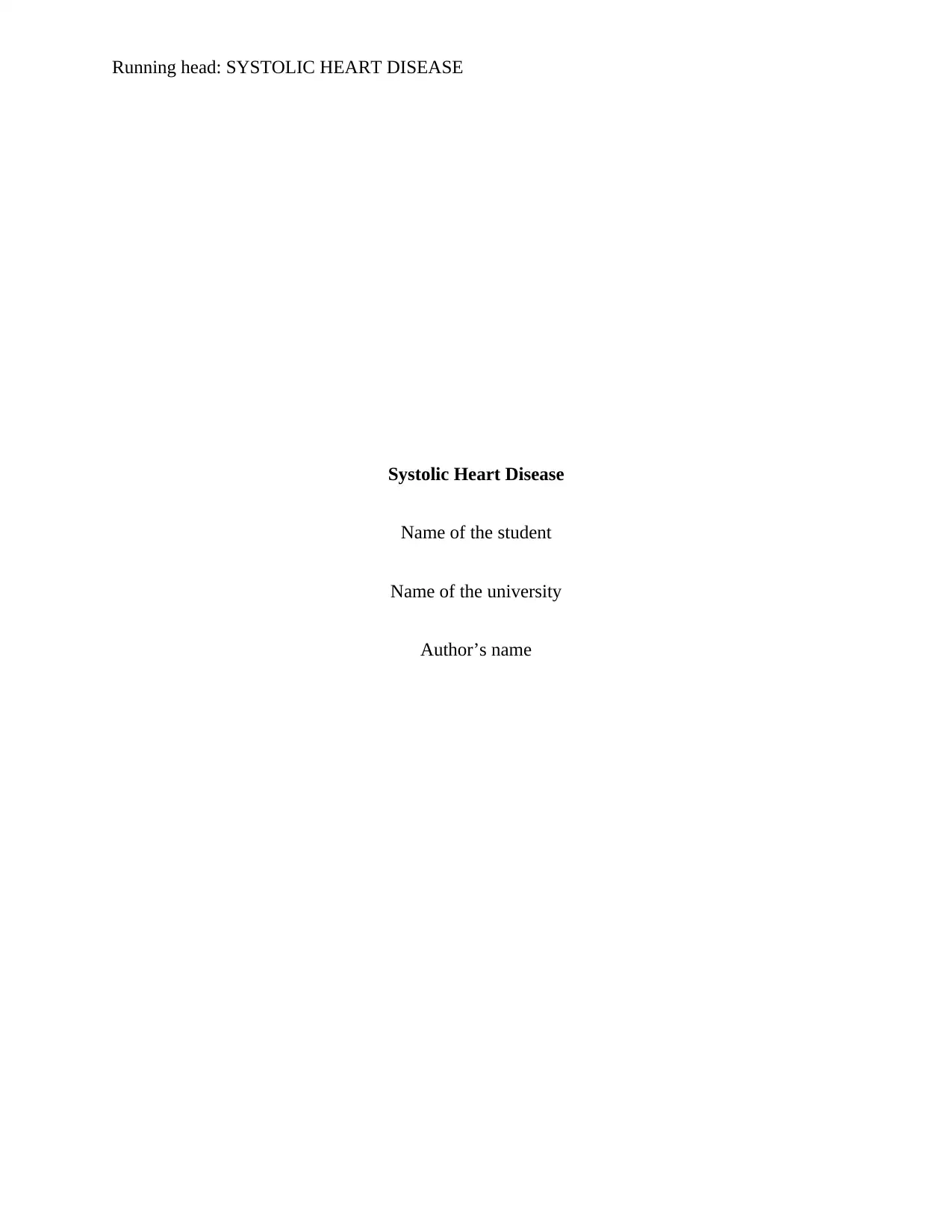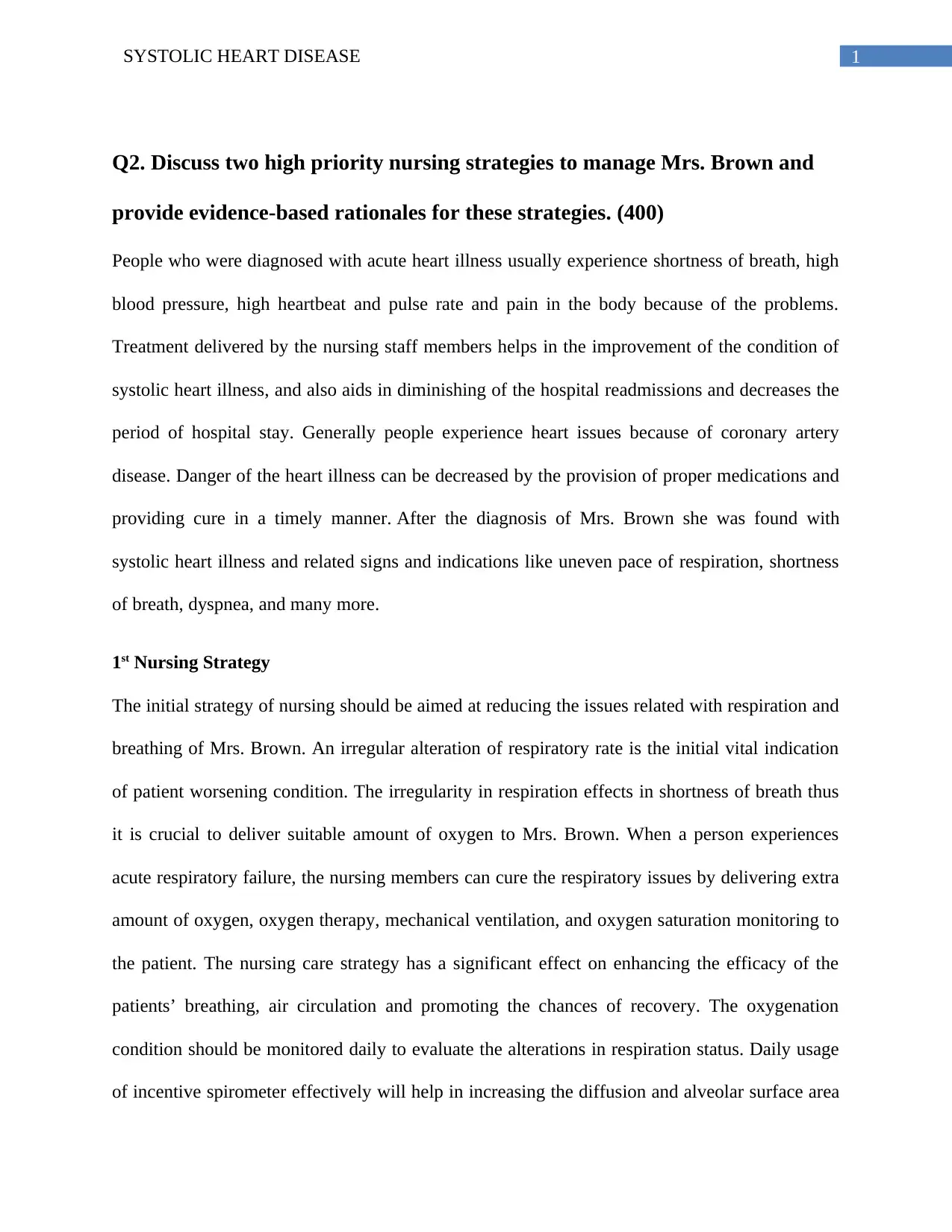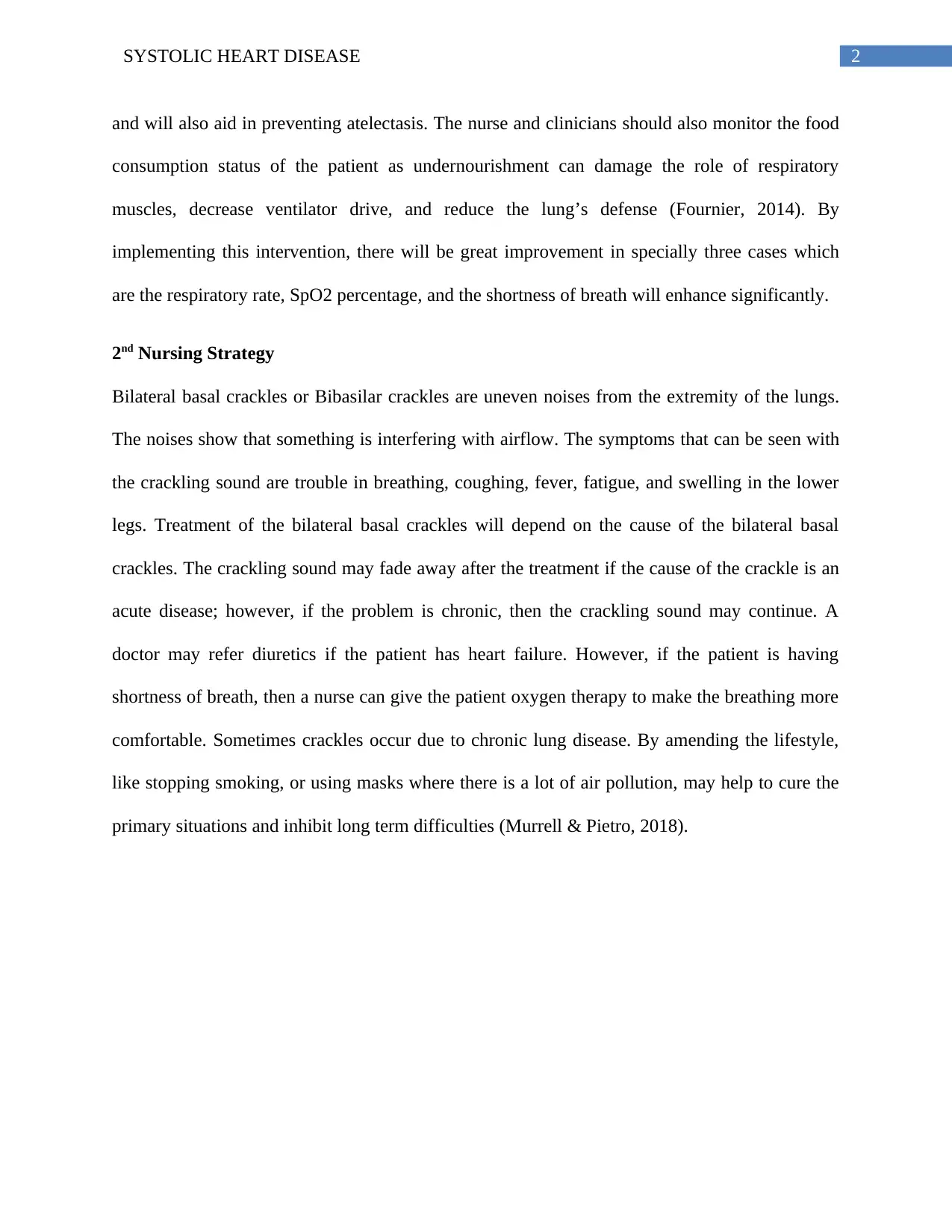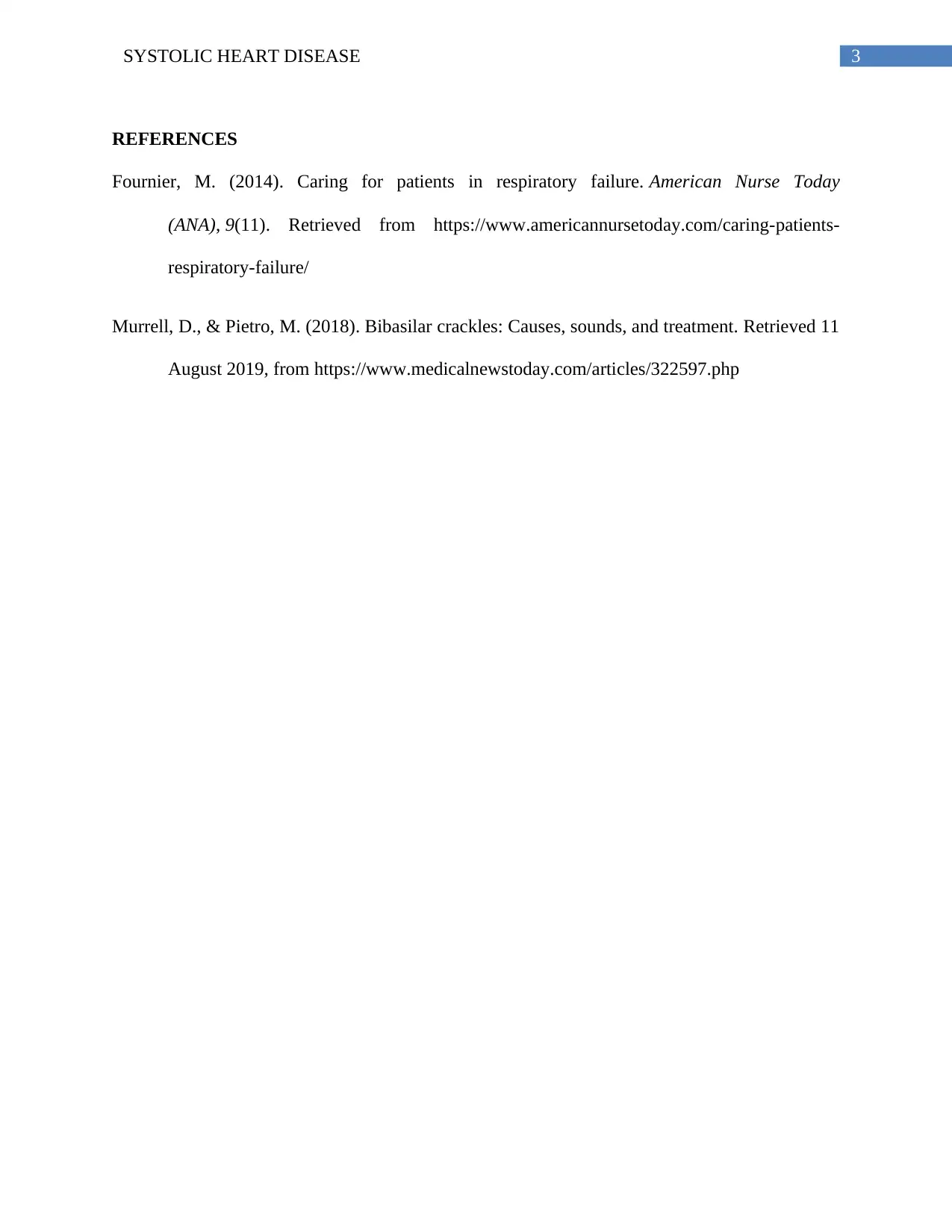Nursing Strategies for Managing Mrs. Brown's Systolic Heart Disease
VerifiedAdded on 2022/09/23
|4
|688
|31
Homework Assignment
AI Summary
This assignment addresses the management of systolic heart disease, focusing on two high-priority nursing strategies for a patient named Mrs. Brown. The first strategy centers on addressing respiratory issues, which are common in acute heart illness, by providing oxygen therapy and monitoring oxygen saturation. The rationale emphasizes the importance of maintaining adequate oxygenation to improve breathing and prevent complications such as atelectasis. The second strategy focuses on managing bibasilar crackles, a symptom often associated with heart failure, and discusses interventions such as oxygen therapy and lifestyle modifications. The assignment provides evidence-based rationales for these strategies, referencing relevant literature to support the interventions and emphasizing the importance of timely and appropriate nursing care to improve patient outcomes and reduce hospital readmissions. The student has provided references to support their arguments.
1 out of 4











![[object Object]](/_next/static/media/star-bottom.7253800d.svg)